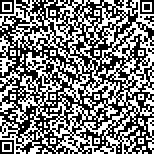王欣,胡川,卢秀艳,等.功能性电刺激联合电针拮抗肌治疗脑卒中后痉挛型足下垂的疗效观察[J].中华物理医学与康复杂志,2021,43(5):396-400
扫码阅读全文

|
| 功能性电刺激联合电针拮抗肌治疗脑卒中后痉挛型足下垂的疗效观察 |
|
| |
| DOI:10.3760/cma.j.issn.0254-1424.2021.05.003 |
| 中文关键词: 功能性电刺激 电针 拮抗肌 脑卒中 痉挛 足下垂 |
| 英文关键词: Functional electrical stimulation Electric acupuncture Acupuncture Stroke Spasm Foot drop |
| 基金项目:山东省中医药科技发展计划项目(2017-283) |
|
| 摘要点击次数: 5434 |
| 全文下载次数: 7888 |
| 中文摘要: |
| 目的 观察四通道功能性电刺激(FES)联合电针拮抗肌治疗脑卒中后痉挛型足下垂的临床疗效。 方法 采用随机数字表法将90例脑卒中后痉挛型足下垂患者分为对照组、电刺激组及观察组,每组30例。3组患者均给予常规康复训练,电刺激组在此基础上给予四通道FES治疗,观察组则给予四通道FES及电针拮抗肌治疗。于治疗前、治疗4周后分别对3组患者进行疗效评定,包括临床痉挛指数(CSI)评定、步态时空参数(包括步频、步幅、患侧支持相、患侧摆动相)及肌电检查等。 结果 治疗4周后3组患者CSI评分均较治疗前明显降低(P<0.05),并且观察组CSI评分[(7.9±2.5)分]亦显著低于电刺激组及对照组[分别为(8.4±2.4)分和(10.1±2.7)分](P<0.05);治疗后3组患者各项步态时空参数均较治疗前明显改善(P<0.05),并且观察组改善幅度均明显优于电刺激组及对照组(P<0.05);治疗后3组患者偏瘫侧下肢H反射潜伏期较治疗前明显延长(P<0.05),Hmax/Mmax比值较治疗前明显降低(P<0.05),并且观察组上述指标[分别为(30.39±1.96)ms和(0.36±0.11)]亦显著优于电刺激组及对照组水平(P<0.05)。 结论 四通道FES联合电针拮抗肌治疗脑卒中后痉挛型足下垂患者具有协同作用,能进一步改善患者踝关节痉挛病情和步态,提高踝关节稳定性及步行功能。 |
| 英文摘要: |
| Objective To observe the clinical effect of combining four-channel electrical stimulation with electroacupuncture of the antagonistic muscles in treating post-stroke spastic foot drop. Methods Ninety stroke survivors with spastic foot drop were randomly divided into a control group, an electrical stimulation group and an observation group, each of 30. In addition to routine rehabilitation training, the electrical stimulation group was given four-channel electrical stimulation for 4 weeks, the electrical stimulation was delivered with a pulse duration of 200μs and an intensity of motor threshold at 30Hz, while the observation group also received electroacupuncture of the antagonistic muscle. Before and after the treatment, the three groups were evaluated using the clinical spasticity index (CSI). Stride frequency, stride length, and the supporting and swing phases on the affected side were also measured. Electromyography (EMG) was also conducted. Results After the treatment, the average CSI scores of all groups had decreased significantly, with that of the observation group significantly lower than the electrical stimulation group and control group′s averages. The average gait descriptors of the three groups had also improved significantly, with significantly greater improvement in the observation group than in the other two. The average H reflex latency was significantly longer and Hmax/Mmax was significantly smaller in all three groups, but the observation group′s average values were again significantly better than those of the electrical stimulation group. Conclusion Electroacupuncture of the antagonistic muscle enhances the effectiveness of four-channel electrical stimulation in relieving foot drop symptoms and improving gait after a stroke. |
|
查看全文
查看/发表评论 下载PDF阅读器 |
| 关闭 |